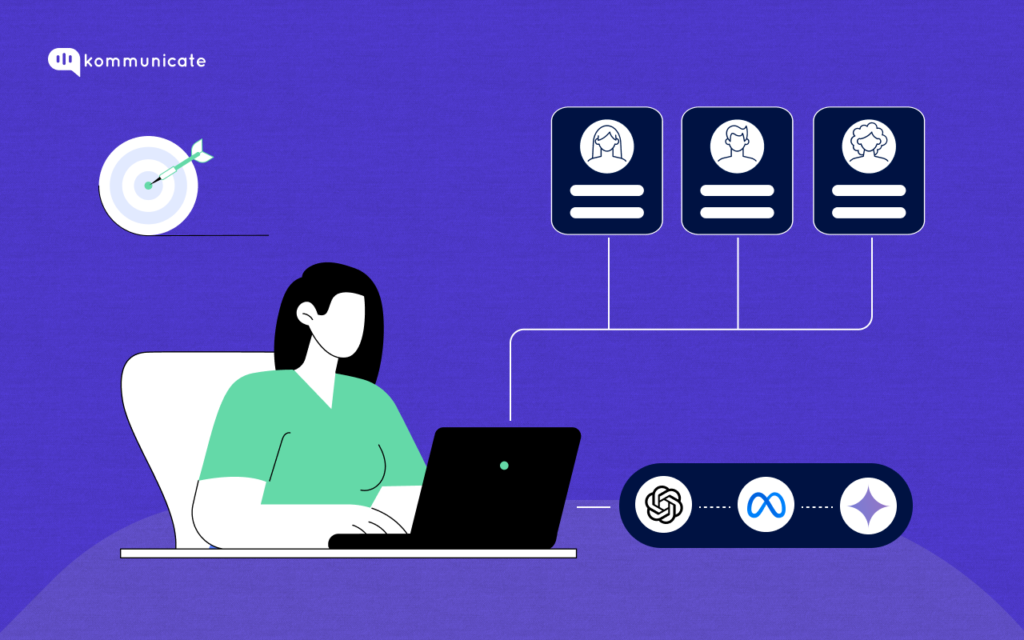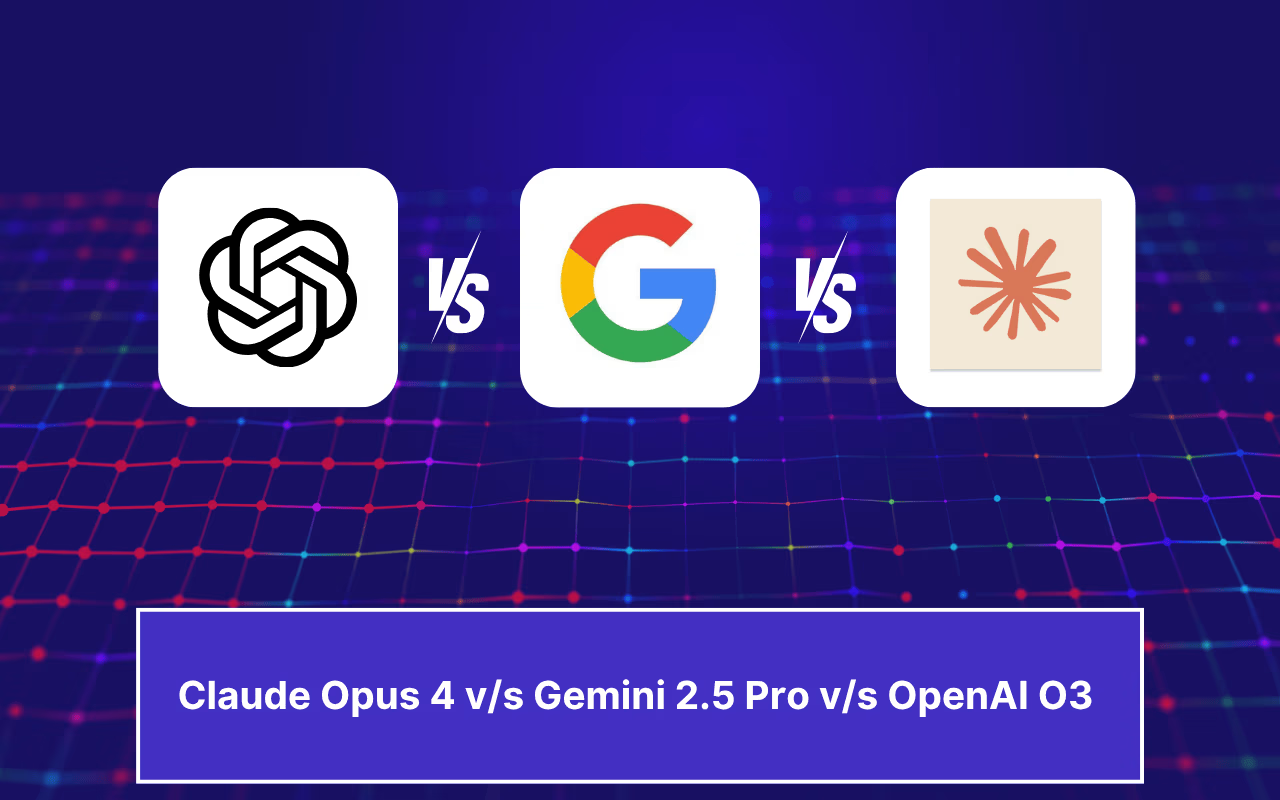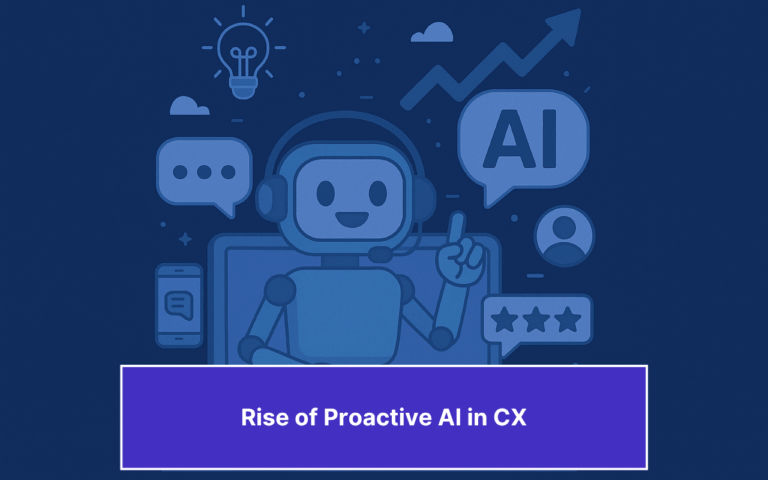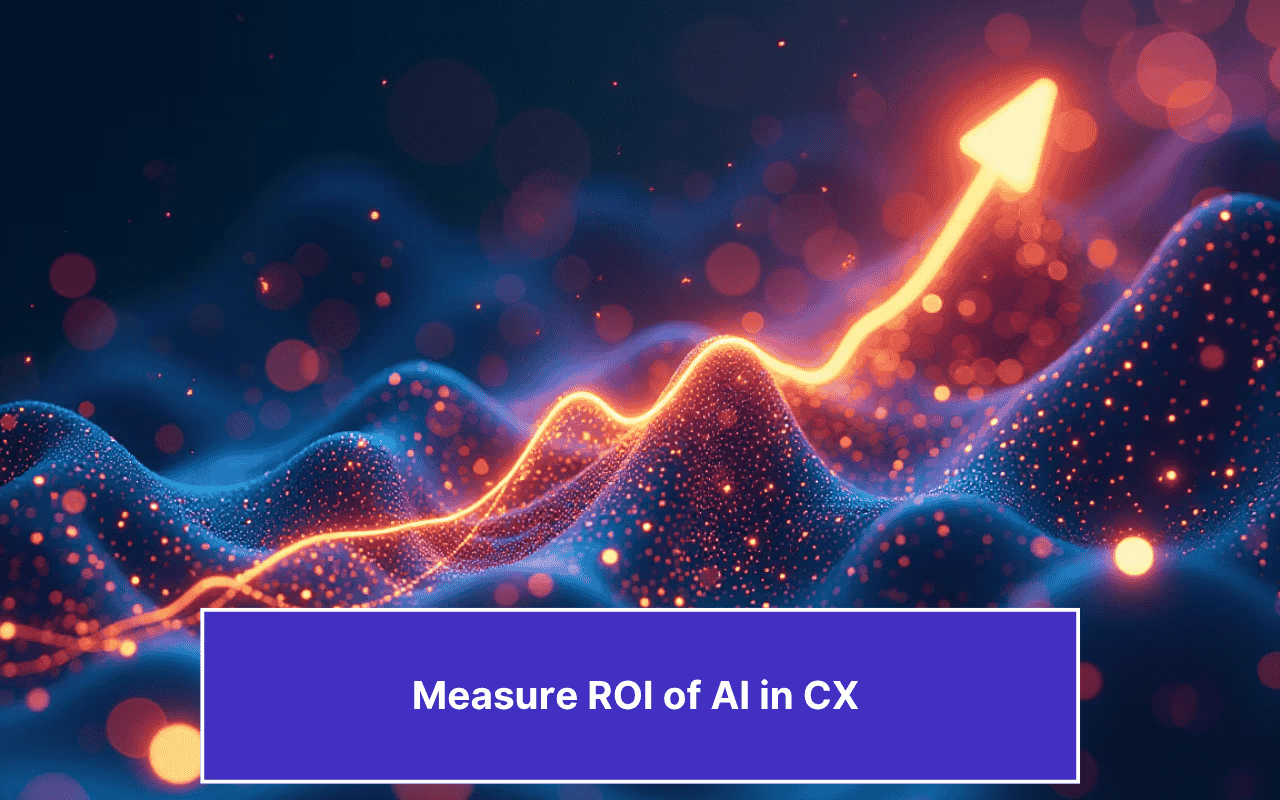Updated on June 18, 2025

In today’s hyper -competitive business environment, customer experience will stand out as the crucial differentiator between an enterprise that grows YoY and one that doesn’t. This is not a blanket statement. In a recent Salesforce survey, 80% of the people polled said that the experience a company provides is as important as the product or service itself.
Enterprises today are prioritizing customer engagement strategies, using emerging technologies to foster meaningful interactions across multiple touchpoints. By leveraging the power of emerging technologies such as Generative AI, developers can empower enterprise businesses to forge deeper connections with their customers. Additionally, enterprises can enhance customer support processes with AI-powered email ticketing to deliver faster and more personalized assistance. When the customer experience market is itself a $1.6 trillion brand differentiator in the US, according to a report by Forbes, enterprises must spearhead the adoption of such innovative solutions.

If you wanna learn more about the topic of generative AI, check out these articles:
- Top Generative AI Trends to Watch out in 2024
- Implementing Generative AI – A Step-by-Step Guide for Product Managers
- How 4 Companies Transformed with Generative AI Adoption
But it is not easy to maintain a consistent user experience, especially for an enterprise with a large and diverse customer base. Here are some of the challenges enterprises face while trying to maintain customer engagement:
- Customer expectations: Technological advancements and customer preferences and behaviors are continuously evolving, and enterprises will have to keep up with these demands.
- Resource crunch: Enterprises must balance the need for high-quality engagement with limited human and financial resources.
- Consistency across channels: A seamless and consistent customer experience across various digital and physical channels.
- Personalization at scale: Delivering personalized experiences that are custom-fit to individual preferences across multiple touch points is a major challenge.
- Data integration: Integrating data sources that are distributed and gleaning meaningful insights from them to drive targeted engagement strategies.
While these challenges are common across enterprises, they are not an insurmountable problem. Using modern technologies such as generative AI, enterprises can mitigate some of these challenges. Let us take a look at how this can be achieved. For organizations looking to improve customer engagement with AI, training teams is key. A focused ChatGPT course helps staff craft better prompts, understand real-world uses, and use AI responsibly. This leads to more accurate interactions, better automation, and increased confidence in using conversational AI with customers.
Generaive AI Guide: Future of Customer Support with Generative AI
Harnessing the power of Generative AI for large businesses
Some of the key areas in which Gen AI finds its applications in large enterprises include:
- Creative design: Generative AI is used in automating the creation of written, visual, audio and video content, which was previously done manually and was labor-intensive.
- Customer service automation: Generative AI powered chatbots and virtual assistants can provide instant, personalized support and assistance to customers across various channels.
- Scaling existing content: With traditional content creation methods, there is always the issue of being labor intensive and enterprises struggling to keep up with the ever-increasing demand for content. But what we have seen with Generative AI models like GPT-3 and DALL-E is technology breaking down these barriers. These models can create vast amounts of text, images and other content at a fraction of the time that traditional methods take, and at lower costs. Anthropic’s Constitutional AI, for instance, generated 100,000 research paper abstracts in a matter of hours.
- Real-time adaptation: What hinders traditional content creation is their inability to adapt in real-time to changing circumstances or user feedback. Generative AI models can dynamically adjust and refine content based on real-time inputs and interactions.
- Increased relevance: Enterprises can better understand customer preferences and contextual data using GAI, which can generate highly relevant models based on individual needs. For instance, the fintech startup Cleo uses Gen AI to give personalized financial coaching and recommendations based on the user’s spending habit.
While generative AI does produce a lot of benefits for enterprises, there are a few ethical considerations that must be kept in mind for responsible use of Generative AI. Some of them include mitigating biases that might creep in and ensuring fairness in the content generation and personalization algorithms.
We have taken a sneak peek into how Generative AI can change the customer experience game, but let us now hear from industry experts on what they have to say.
Try This: Build and deploy generative AI-powered chatbots anywhere
Strategies enterprises are adopting to leverage Gen AI
We have talked to top industry experts on the possible strategies they see that Gen AI can be used in, and this is what they had to say.
Strategy 1: Generative AI can augment existing workforce
More and more enterprises are coming to use Generative AI as an addition to their existing workforce, to enhance productivity and employ it for tasks such as note-taking, content generation and collaboration. In this case, Gen AI amplifies human capabilities, but does not entirely replace it.
A potential application of Generative AI is to use it for intelligent meeting assistance. Generative AI models like Anthropic’s Constitutional AI can be integrated into video-conference platforms to provide real-time transcription, summarization and action item generation during meetings. This takes away the burden of manual note-taking and also ensures that the documentation is accurate and covers all the points.
Enterprises must make sure that there are clear processes and guidelines established before using Gen AI for workforce augmentation. This includes defining the scenarios where Generative AI is employed, setting up secure and compliant data pipelines for model training and usage, and adopting robust quality assurance measures.
One example of an enterprise using Generative AI to augment their existing workforce is JP Morgan Chase, one of the largest banking and financial services companies in the world. JP Morgan Chase has been using a Gen AI powered AI assistant called ALMA (Artificial Linguistic Multilingual Assistant) in its internal collaboration platform. ALMA can understand and respond to natural language queries from employees across various domains, such as HR, legal and compliance. It can provide answers, personalized guidance and generate content tailored to individual needs.
Johnie Xie, Co-founder and CEO of Taskade, feels that as more and more enterprises adopt Gen AI, the lives of agents are going to get much easier. The collaboration between humans and AI agents is set to redefine productivity, creativity, and efficiency in the workplace.
What’s truly groundbreaking about this technology is its ability to learn and adapt. Imagine AI agents that not only perform tasks but also get better at them over time, learning from each interaction to provide more personalized and efficient support.
Strategy 2: Using Generative AI transforming business automation
Business Process Automation is a major cost center for any large enterprise, and they can use Generative AI to automate and streamline various processes and tasks. Enterprises can use Gen AI to augment their existing automation efforts, paving the way for innovation.
Robotic Process Automation (RPA) is one part of Business Automation that is a perfect use case for Generative AI. Combining RPA and Gen AI systems, enterprises can automate more complex tasks that were previously impossible to automate by traditional, rule-based automation methods.
One advantage of Gen AI models is that they can understand and interpret unstructured data, such as natural language inputs or document formats. Based on these inputs, they can generate appropriate actions or outputs. This paves the way for end-to-end automation.
Considering that tasks involving language make up about 25% of all work activities, generative AI’s applications in business cover a range of processes and workflows. These include carrying out managerial tasks like prioritizing assignments in project management software, scheduling meetings, organizing emails, searching for precise information across IT infrastructure, and summarizing it via a conversational interface; automatically creating standard or bespoke documents and reports; and inputting information into technological systems.
Salesforce, for instance, has implemented a Generative AI system called CodeGen AI into their CRM platform. CodeGen AI can automatically generate code snippets, documentation, and even entire applications based on natural language prompts from developers.
Precious Abacan, Marketing director at Softlist, feels that the transformative power lies in its ability to understand natural language.
The main strength of generative AI is its ongoing learning from new data and the continuous refinement of its abilities.

Strategy 3: Using Generative AI for Hyper personalization in AI marketing
As AI evolves, more and more businesses will come to rely on AI-powered chatbots and virtual assistants to provide a seamless customer experience. Enterprises will use Generative AI to transform interactions with customers by hyper-personalization.
Generative AI can create highly tailored content, such as product descriptions, social media posts, marketing emails, ad copies and much more, all based on individual customer preferences, browsing data and behavioral history. This means that enterprises are no longer sending out generic content, and that the content they produce resonates with each customer’s unique interests.
Another aspect that Gen AI is disrupting the marketing function of enterprises is Dynamic Creative Optimization. Gen AI can dynamically generate and adapt creative assets like images, videos and audio files in real-time, optimizing for specific audience segments or individual customer profiles. This will drive higher engagement and conversion rates.
Netflix is an example for an enterprise that is using AI generated content in its marketing activities. Netflix’s AI system tailors content to each user’s behavior and viewing preferences, improving user engagement and making visitors come back for more. By analyzing vast user data, Netflix’s generative AI delivers highly customizable marketing experiences at scale, driving customer retention.
Jesse Hopkins, Marketing director at Marketing Mouse, feels that hyper personalization in AI marketing will create a more engaging and seamless customer experience.
AI will revolutionize strategies for marketing by utilizing data analytics to obtain a better understanding of consumer behavior and preferences. In order to maximize return on investment, marketers will be able to execute customized ads, improve customer journeys, and make data-driven decisions.
Strategy 4: Deploying Generative AI gradually, to result in User-Centric AI
One key strategy that enterprises are using is staged rollout of Generative AI, to a select group of users based on region / segment. With this controlled rollout, enterprises can closely monitor the user experience, gathering user feedback and opening the doors to iterative improvements before scaling further.
Initially, Outputs that are a result of Gen AI can be reviewed and approved by a human expert, before it is presented to users. This builds a system of quality control and trust in the AI system’s capabilities. As the system matures, the level of human oversight can be gradually reduced.
As the acceptance of users grows and there is a greater confidence in AI, enterprises can gradually increase the level of AI integration, moving away from assistive roles to more autonomous, decision – making roles that have well-defined boundaries.
Serhii Antoniuk, CEO at LITSLINK, feels that deploying AI gradually will help you identify potential errors and catch negative impacts as soon as they happen.
Our gradual deployment ensures we maintain a parallel working version of our software that operates without the AI component. It acts like a safety net that allows us to revert to the AI-free version should we encounter any unexpected negative outcomes.
Strategy 5: Using Generative AI to create immersive AI Customer experiences
One of the ways enterprises can use Generative AI to enhance customer engagement by using it to create immersive customer experiences. Engaging visual content, personalized product recommendations and interactive virtual experiences are just some of the areas that Gen AI can make an impact in.
Generative AI enables enterprises to tailor experiences based on individual preferences, behaviors and demographics, whereby they can foster deeper connections and drive engagement. As an added bonus, enterprises can conduct rapid experimentation and iteration, allowing businesses to innovate and adapt their strategies in real-time.
The chief goal of an enterprise is to differentiate itself in the marketplace, and they can leverage Generative AI to achieve this. Building brand loyalty and driving long-term success are just byproducts of using Generative AI in creating these immersive experiences.
Adobe Sensei, the AI and machine learning platform that powers various Adobe products, is a perfect example of Gen AI being put to use to create an immersive experience. Adobe Photoshop’s Content-Aware feature, for instance, intelligently fills-in missing areas of an image, seamlessly blending it with surrounding content.
Alex Taylor, Head of Marketing at CrownTV, feels that collecting feedback from customers and using it to iteratively improve the VR/AR experiences is crucial.
Generative AI can be used to create virtual reality (VR) or augmented reality (AR) experiences that allow customers to interact with products in a virtual environment before making a purchase. This can provide a more engaging and personalized shopping experience, leading to increased customer satisfaction and loyalty.
Strategy 6 : Generative AI can augment existing content
Creating fresh content that resonates with a large and diverse customer base is a challenge for any enterprise. Generative AI, with its ability to analyze and interpret large troves of data, can generate new and engaging content that will complement an enterprise’s existing assets.
Automating the content creation process, such as generating blog posts, product descriptions or articles, can be done with the help of Generative AI, which can do this based on predefined topics, styles or keywords. To enhance existing content, Generative AI can add visual elements, such as images, graphics or video.
Vinika Garg, Chief Operating Officer of Webomaze, says that one of the strategies large enterprises are using these days to utilize Gen AI is augmenting existing content.This content can be blog posts, social media posts or product descriptions, which will feel fresh to the users and will keep them engaged.
Brands can use generative AI for data mining, resulting in suitable hashfortags and stats. Incorporating hashtags and stats into the content will make it more appealing and clickable. Based on the audience’s persona, they can also ask AI to augment and personalize existing content.

Strategy 7: Using Generative AI to power personalized recommendation engines
One of the key advantages of Generative AI is its ability to analyze vast amounts of data and tailor recommendations according to it. More and more enterprises are now using Generative AI algorithms to generate personalized recommendations for products, services and content that are more relevant to each user.
Amazon is an example of a huge enterprise that uses generative AI to create personalized recommendation engines. Amazon’s algorithms with Generative aI powering them suggest products to its customers based on their browsing history, purchase behavior and demographic information.
The beginning of this strategy is with data collection, where Amazon gathers a vast trove of information about a customer, such as their purchasing preferences, items added to wishlist, items viewed and even mouse movements on the website. Generative AI algorithms then analyze this data to identify patterns and correlations. Using this analysis, Amazon can give the customer personalized recommendations tailored to each user.
For example, if a customer is a frequent purchaser of self-help books, then Amazon may suggest other books that the user has not read, but other users with similar interests have purchased in the past. Amazon may also suggest bundles of books or accessories such as the Kindle.
Julian Breuning, CEO of MLP Software development, says that this strategy not only boosts sales but also creates a more personalized and satisfying customer experience.
Aim for clarity in how suggestion algorithms work, build trust with customers, and help them understand how recommendations are generated.
And there you have it. 7 Strategies that enterprises are using to boost their customer engagement. These may be varying viewpoints from the industry leaders, but, Generative AI is still in its nascent stage, and we feel that as we take this amazing technology forward, more and more enterprises will recognize the importance of implementing Generative AI in their daily operations. Generative AI presents a transformative opportunity for large enterprises, and by leveraging its capabilities, these enterprises can deliver immersive and tailored experiences that resonate with their audience.
As the Head of Growth, Marketing & Sales, Yogesh is a dynamic and results-driven leader with over 10+ years of experience in strategic marketing, sales, and business development.





